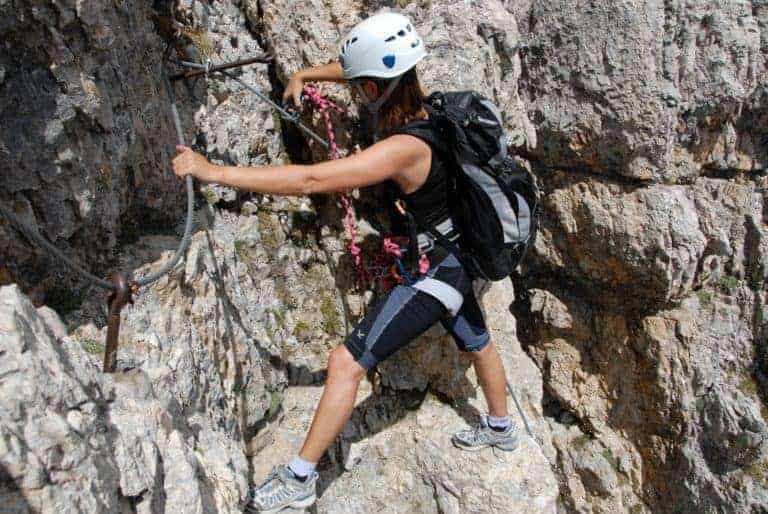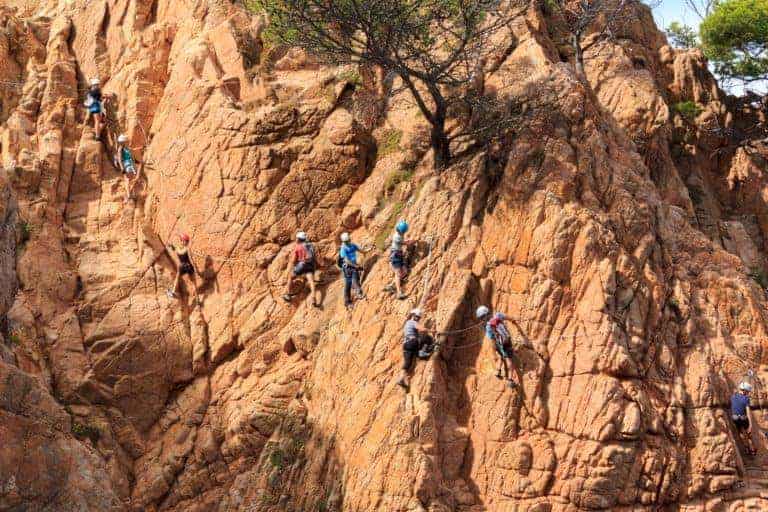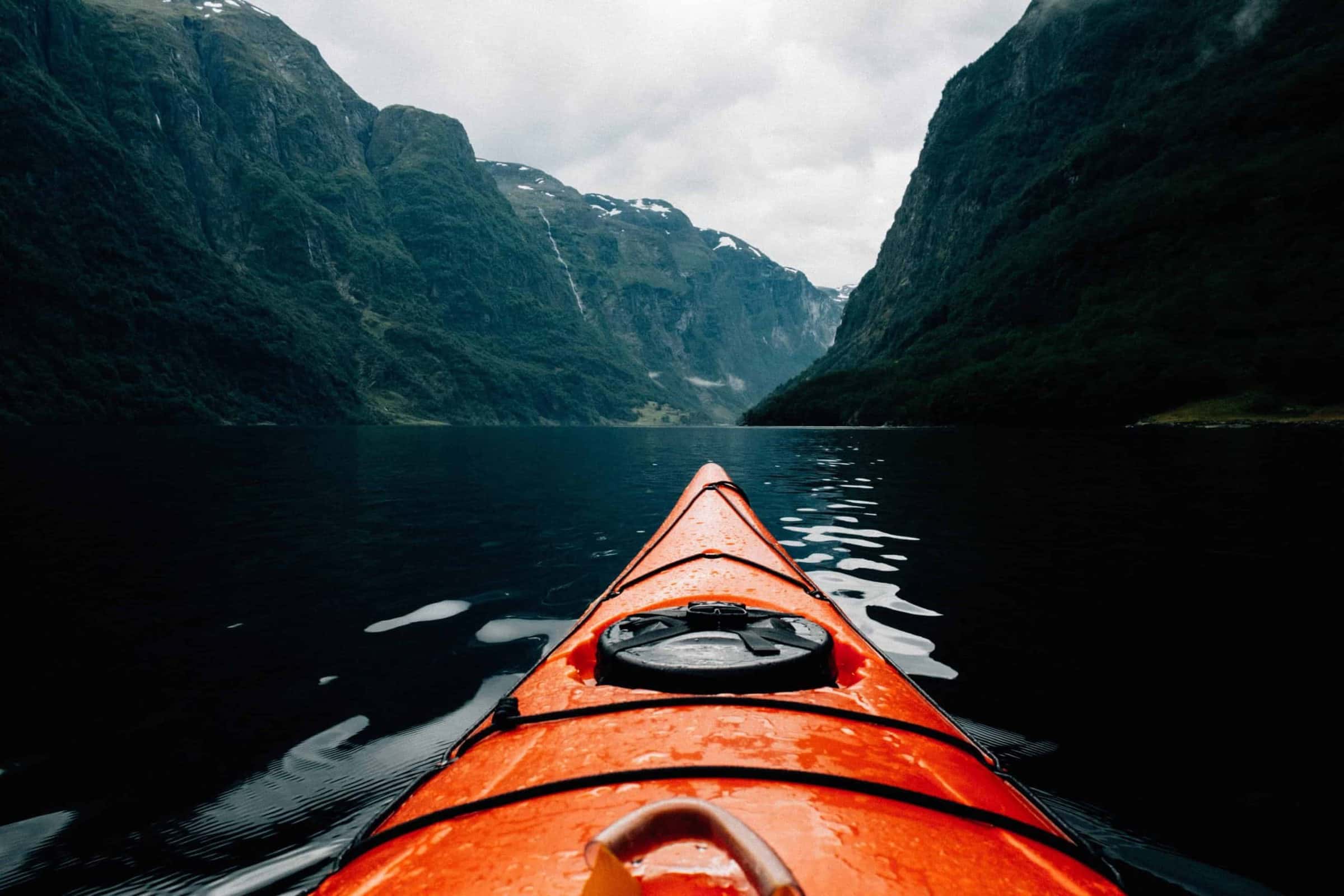Via ferrata, literally “iron path”, is a protected climbing route marked with metal rails, rungs, ladders and bridges. Halfway between scrambling and climbing, via ferrata can let you feel the thrill of scaling mountains and difficult passes even when you’re a beginner.
Via ferrata covers a set climbing route up the side of a mountain. You’re clipped on to a steel cable which is attached to the rock, progressing by moving your karabiners as you pass along the route. Everyone follows the same path with few, if any, drop out points. So once you’re going you’re committed until the end as there could be a queue of people behind you preventing you from going back.

You’ll need a head for heights and a sense of adventure, but the views and the thrill of the experience are worth it.
What equipment is needed
As a minimum you will need a helmet, harness, via ferrata set (consisting of two karabiners and a lanyard) and gloves. These can normally be hired nearby if you aren’t planning on investing in your own set.
Is it suitable for beginners?
Most via ferrata are accessible for beginners, with a grading system in place to show the difficulty. Check the difficulty before heading off or hire a guide to help provide support and experience.
Where to try
Via ferrata originated in Europe and there are hundreds of easily accessible routes throughout the continent. Some routes, such as the Honister Slate Mine in the Lake District, require guides so make sure you’ve booked these in advance.

Any risks?
As with all activities there are risks. While clipping on to the wire provides some security, if you slip you’ll fall back to the previous bolt and can still get bashed against the rocks. Look for good weather conditions to minimise the likelihood of slips and falls.
If you’re looking for adventure, spectacular views and a sense of achievement, it’s time to give via ferrata a try.


